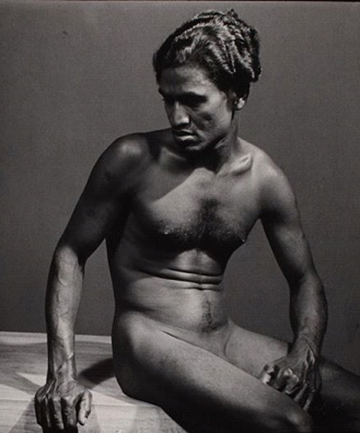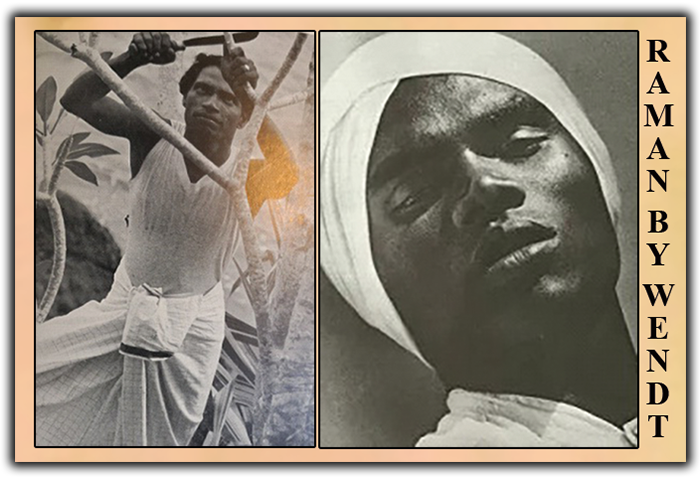Lionel Wendt, Count de Mauny, David Paynter and Raman-by Hugh Karunanayake
Source:Island
Image Source:Island
The self styled “Count”. De Mauny was born as Maurice Marie Talavande on March 21, 1886. The circumstances under which he left for Ceylon were controversial, some writers suggesting that he was compelled to leave France for misbehaviour with young men in his charge.
None of these rumours have ever been established, and to this day remain as rumours. According to William Warren, author of the book “Tropical Asian Style”, de Mauny was first invited to Ceylon in 1912 by SIr Thomas Lipton the tea magnate. He followed that up with several subsequent visits concluding with his purchase of an island off the coast of Weligama, which was only a rocky outcrop one and a half acres in extent and overrun with weeds.
He paid Rs 250 for the island, and soon settled down to design, construct, and establish a beautiful homestead replete with a variety of tropical plants set in elegant style. De Mauny was a talented carpenter, garden designer, and horticulturist, all of which enabled him to establish a beautiful property which he named Taprobane, after the ancient Greek name for the island of Ceylon.
De Mauny’s surrealistic adventure in designing, and establishing the gardens were all narrated in his book titled “The Gardens of Taprobane” published by Williams and Norgate Ltd of London in 1937. The book is not available anywhere for purchase today, and is now a collector’s item.
Before setting up his garden in the island of Taprobane, de Mauny inserted an advertisement calling for applications for selection of a gardener to oversee the establishment and maintenance of the garden he planned for his island. A young man 16-years of age named Raman who had only arrived in Ceylon from Travancore on the previous day, was selected for the position. De Mauny seemed to be so satisfied with his choice, that he devoted two chapters in his book “The Gardens of Taprobane’’ to describing the attributes of Raman who remained with him for eight years.

RAMAN BY WENDT
De Mauny died in Jaffna in 1942 of heart failure and that was the point which signalled the downward decline of the home and garden he so assiduously established. Nothing was heard thereafter, of Raman and the other domestic staff employed by de Mauny on the island. The image below is of Raman at work in “Taprobane” and extracted from De Mauny’s “The Gardens of Taprobane”.
Lionel Wendt the internationally reputed photographer, aesthete, and “bon vivant” published his limited edition publication titled “Ceylon” in 1950. It is a much sought after publication today almost 75 years after the book was released. It set an internationally recognised benchmark for photography as well as for the selection of the subject material.
One of the images in Wendt’s book is of a person by the name Raman. The image looks very likely that of the Raman portrayed in “Gardens of Taprobane”. This raises the question, viz was Raman’s relationship with De Mauny beyond that of employer/employee?
In Seweryn Chomet’s book on the life of Count de Mauny there is a suggestion that De Mauny was compelled to leave an educational institution in France following allegations of misconduct with male students. Lionel Wendt in his photographs makes no effort to hide his fascination with the male human form. Indeed some photographs by Wendt of Raman in “revealing” postures seem to confirm his predilection
The David Paynter Connection
To compound the Wendt/De Mauny conundrum we have another admirer of the male human anatomy in the well known artist David Paynter making his presence. Paynter would have been around 35 years of age when he painted the portrait of De Mauny which serves as a frontispiece in De Mauny’s book “The Gardens of Taprobane.”
In Chapter 39 of his book De Mauny refers to “two friends ” one of whom was a “painter of great talent” visiting him. The artist had asked De Mauny whether he had ever thought of sharing his happiness with a companion?’’ He did not state his response but went on to state his views on the proposition. Was the artist referred to by de Mauny, David Paynter is the 64 thousand dollar question!!








